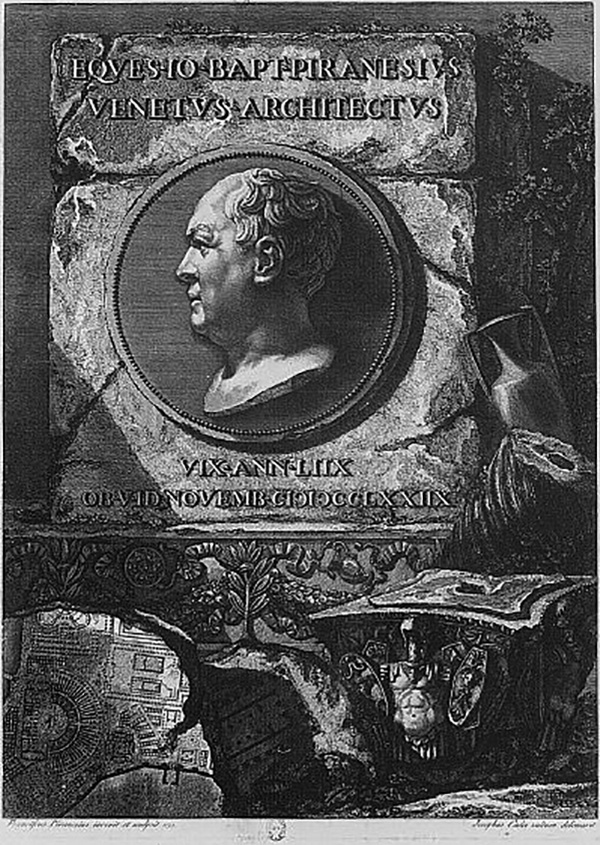Giovanni Battista Piranesi (October 4, 1720 - November 9, 1778) was an Italian artist famous for his etchings of Rome and fictitious ‘prisons’. He was born in Mogliano Veneto, which was part of the Republic of Venice. He learned his trade (Piranesi considered himself an architect) from his father, a stonemason and master builder, his uncle, who taught him structural and hydraulic engineering, an his brother, a Carthusian monk, who inspired Piranesi’s fascination with history and the ancient Romans.
After Piranesi arrived in Rome in 1740, he briefly served as an apprentice to Giuseppe Vasi, who is recognized as the foremost producer of etchings of Rome, meant for pilgrims, scholars, artists, and tourists alike. Creating etchings provided Piranesi with a way to satisfy all of his interests, from designing fantastically complex structures that could only exist in his imagination, to reconstructing the ruins of ancient Rome. His archaeological prints, published in his Antichità Romane in 1756, allowed him to be elected to the Society of Antiquarians in London. He began working on his best known works, the Vedute di Roma (Views of Rome) by 1747, and would continue adding to the series until his death in 1778.
Piranesi is also celebrated for his series known as The Prisons (Carceri d’invenzione, ‘Imaginary Prisons’). These are fantastic, labyrinthine structures of epic proportions. He began working on the series in 1745, and the first state prints, which included fourteen etchings, were published in 1750 and were untitled and unnumbered. The second publishing in 1761 was formatted differently. This series included sixteen etchings, all of this were reworked and numbered I-XVI (1-16). Numbers II and V were new to the series. Though the series remained untitled, each of the sixteen etchings now is attached to a ‘conventional’ title.
After Piranesi arrived in Rome in 1740, he briefly served as an apprentice to Giuseppe Vasi, who is recognized as the foremost producer of etchings of Rome, meant for pilgrims, scholars, artists, and tourists alike. Creating etchings provided Piranesi with a way to satisfy all of his interests, from designing fantastically complex structures that could only exist in his imagination, to reconstructing the ruins of ancient Rome. His archaeological prints, published in his Antichità Romane in 1756, allowed him to be elected to the Society of Antiquarians in London. He began working on his best known works, the Vedute di Roma (Views of Rome) by 1747, and would continue adding to the series until his death in 1778.
Piranesi is also celebrated for his series known as The Prisons (Carceri d’invenzione, ‘Imaginary Prisons’). These are fantastic, labyrinthine structures of epic proportions. He began working on the series in 1745, and the first state prints, which included fourteen etchings, were published in 1750 and were untitled and unnumbered. The second publishing in 1761 was formatted differently. This series included sixteen etchings, all of this were reworked and numbered I-XVI (1-16). Numbers II and V were new to the series. Though the series remained untitled, each of the sixteen etchings now is attached to a ‘conventional’ title.



